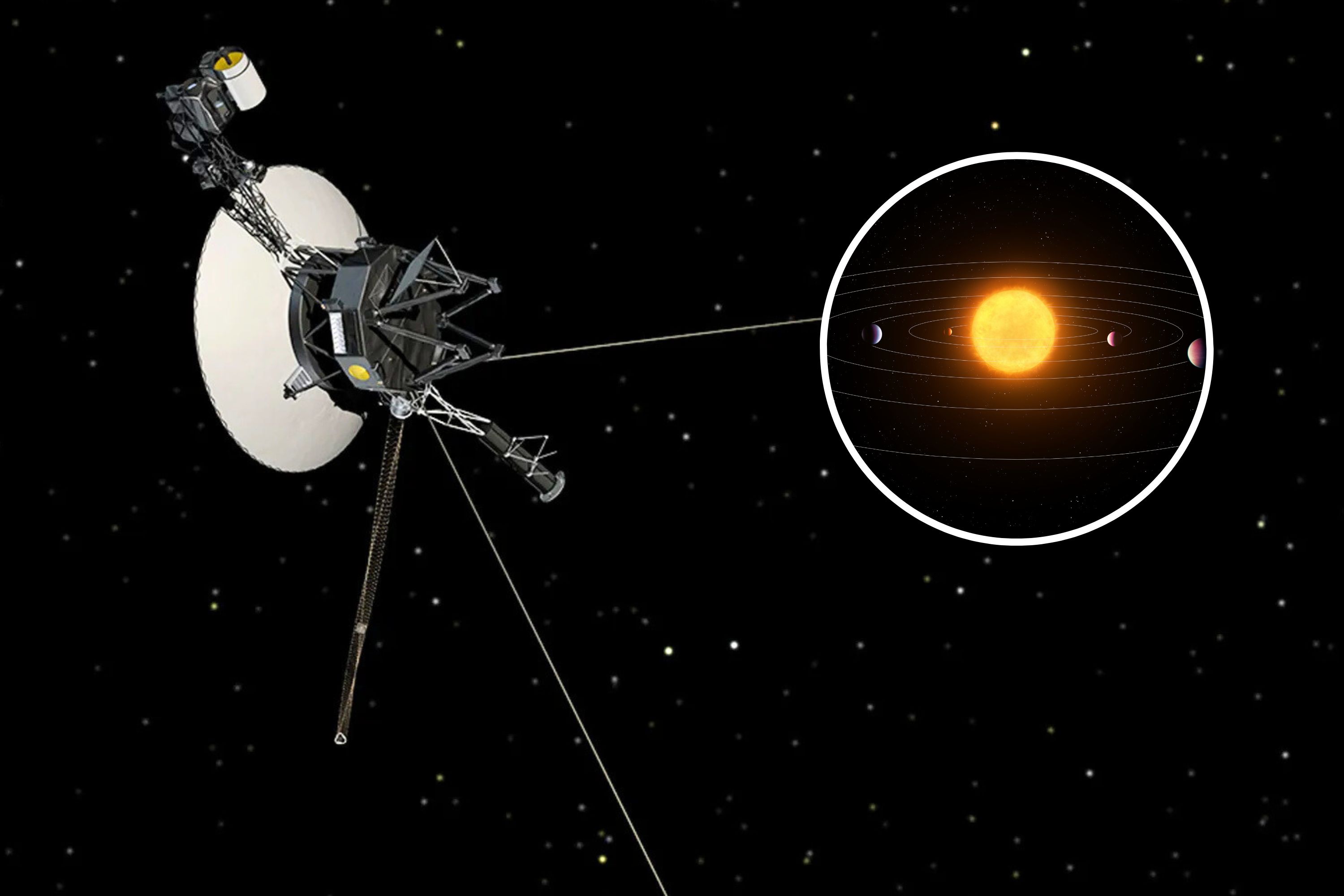
Voyager 1, which has traveled further from Earth than any other human-made object, has resumed contact after a brief period of silence. Last month, on October 19, Voyager 1 stopped sending signals back to Earth, sparking confusion amongst scientists. NASA managed to reconnect to the probe on October 24 using a radio not used since 1981, and on November 18, Voyager 1 resumed sending back data from its four operating science instruments on its original radio system.
What is Voyager 1? Currently located some 15.4 billion miles from our planet, the Voyager 1 spacecraft has been pushing off into deep space since its launch on September 5, 1977. As the lonely spacecraft slowly runs out of power, it has been gradually switching off non-essential systems to preserve its lifespan.

Where is Voyager 1 now? Voyager 1 soared past Jupiter and its moons in 1979, before passing the Saturn system in 1980. Ever since, the spacecraft has been zipping into the abyss of space, and on August 25, 2012, Voyager 1 became the first spacecraft to enter interstellar space, crossing the heliopause, which is the boundary where the sun's influence ends. The probe is now transmitting data about the interstellar medium, including information about cosmic rays, magnetic fields, and particle densities.
Voyager 1 communicates with Earth using the Deep Space Network (DSN). Signals take about 23 hours to travel just one way due to the immense distance between the probe and our planet. The loss of contact in October occurred because the probe turned off its X-band radio transmitter, which it uses to communicate with the DSN.
This happened because NASA attempted to switch on one of the probe's heaters on October 16, resulting in the probe's fault protection system turning off the radio to conserve power. Voyager 1 is powered by three Radioisotope Thermoelectric Generators (RTGs), converting heat from radioactive decay into electricity. However, these RTGs produce less and less power each year as the plutonium on board decays.
"If the spacecraft overdraws its power supply, fault protection will conserve power by turning off systems that aren't essential for keeping the spacecraft flying," NASA said in an October statement. Voyager 1 then switched to using its S-band transmitter, which hadn't been used since the 1980s, and NASA reconnected to the probe. "The probe had unexpectedly turned off its primary radio transmitter, called an X-band transmitter, and turned on the much weaker S-band transmitter," NASA explained in a statement.
"This switch prevented the mission team from downloading science data and information about the spacecraft's engineering status. As of November 18, the X-band transmitter had been turned back on, and the probe was able to send data back to Earth once more. "Earlier this month, the team reactivated the X-band transmitter and then resumed collecting data the week of Nov.
18 from the four operating science instruments," NASA said. Launched in 1977, @NASAVoyager carries a Golden Record with images, greetings, nature sounds, and music from our planet. While we celebrate music tonight on Earth, we’re wondering: What songs would you send to the cosmos? https://t.
co/rrgRyifhcD #Grammys pic.twitter.com/dWoF14APbG Sadly, this trailblazing probe isn't long for this world.
By the mid-2030s, the spacecraft will no longer have enough power to operate its instruments or communicate with Earth, continuing its journey across the galaxy in silence. Technically, Voyager 1 has not yet left our solar system yet, as it has not passed the vast Oort Cloud surrounding the sun and all the planets. "It will take about 300 years for Voyager 1 to reach the inner edge of the Oort Cloud and possibly about 30,000 years to fly beyond it," NASA said.
Voyager 1 carries a gold-plated phonograph record containing greetings in 55 languages, music, natural sounds, and encoded images, designed as a message to potential extraterrestrial civilizations. In about 40,000 years, Voyager 1 is expected to pass within 1.6 light-years of a nearby star called Gliese 445, in the constellation Camelopardalis.
Do you have a tip on a science story that Newsweek should be covering? Do you have a question about Voyager 1? Let us know via [email protected]..










